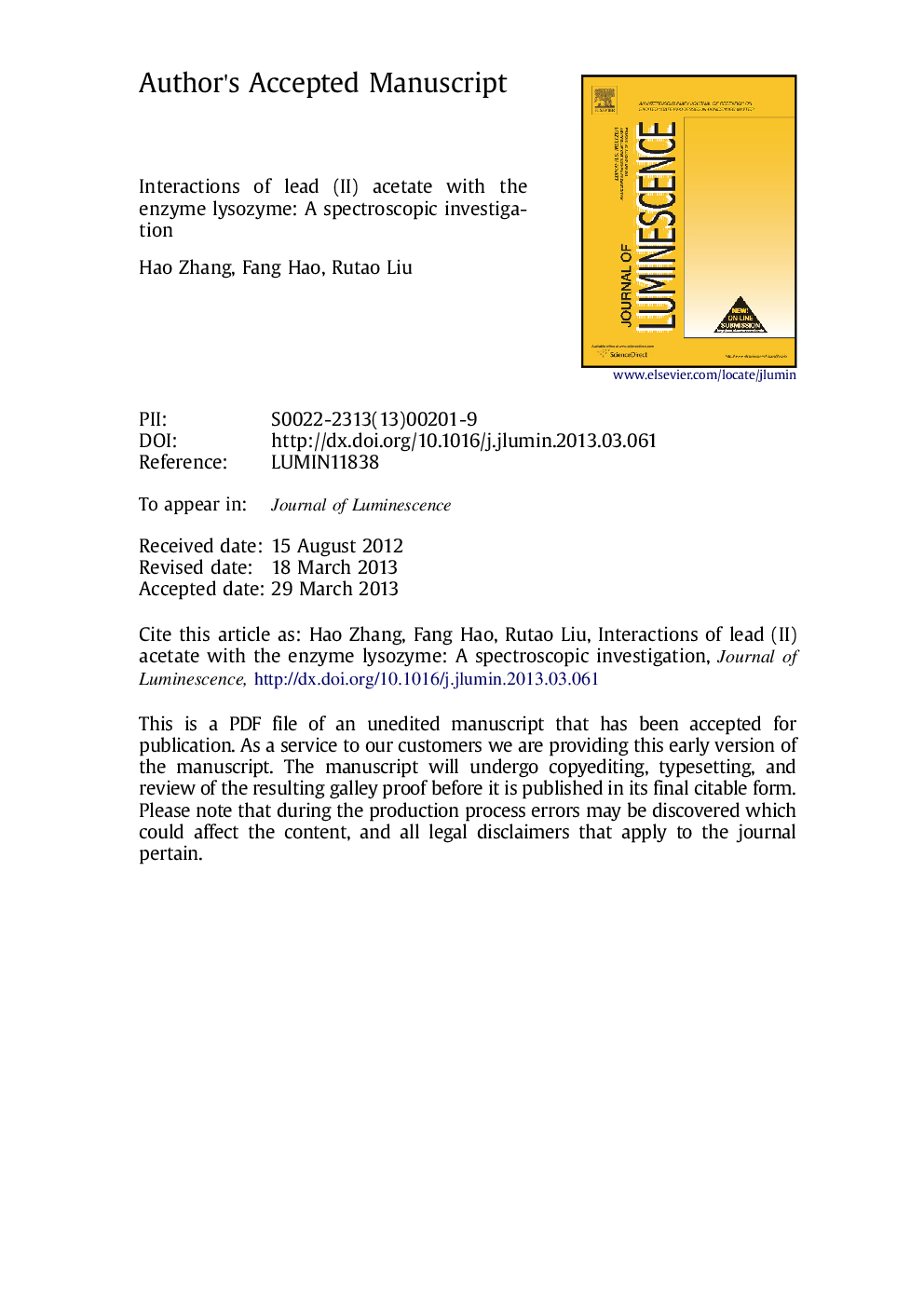| Article ID | Journal | Published Year | Pages | File Type |
|---|---|---|---|---|
| 5400106 | Journal of Luminescence | 2013 | 18 Pages |
Abstract
The interactions between lead (II) acetate and lysozyme in aqueous solution were investigated by fluorescence, UV-vis, surface-enhanced Raman scattering (SERS) and circular dichroism spectroscopies. The activity of lysozyme was inhibited by the addition of lead acetate. The SERS results revealed that the environment of the tryptophan (Trp) residues became more hydrophobic. Synchronous fluorescence spectra confirmed that the conformation of lysozyme had been changed and both tyrosine and tryptophan residues were located in a more hydrophobic environment. The decreased lysozyme activity and fluorescence quenching results showed that lead acetate entered the largest pocket of lyoszyme, and affected the residues in this pocket, including the catalytic residues (Glu 35, Asp 52) and the most dominant fluorophores (Trp 62, Trp 108). The fluorescence measurements suggested different lead acetate species had varying influences on the micro-environment of lysozyme. In addition, the UV-vis spectra indicated that the backbone of lysozyme was changed and circular dichroism showed that the secondary structure of lysozyme displayed a decrease in α-helix and an increase in β-sheet with the increasing amount of lead acetate.
Keywords
Related Topics
Physical Sciences and Engineering
Chemistry
Physical and Theoretical Chemistry
Authors
Hao Zhang, Fang Hao, Rutao Liu,
